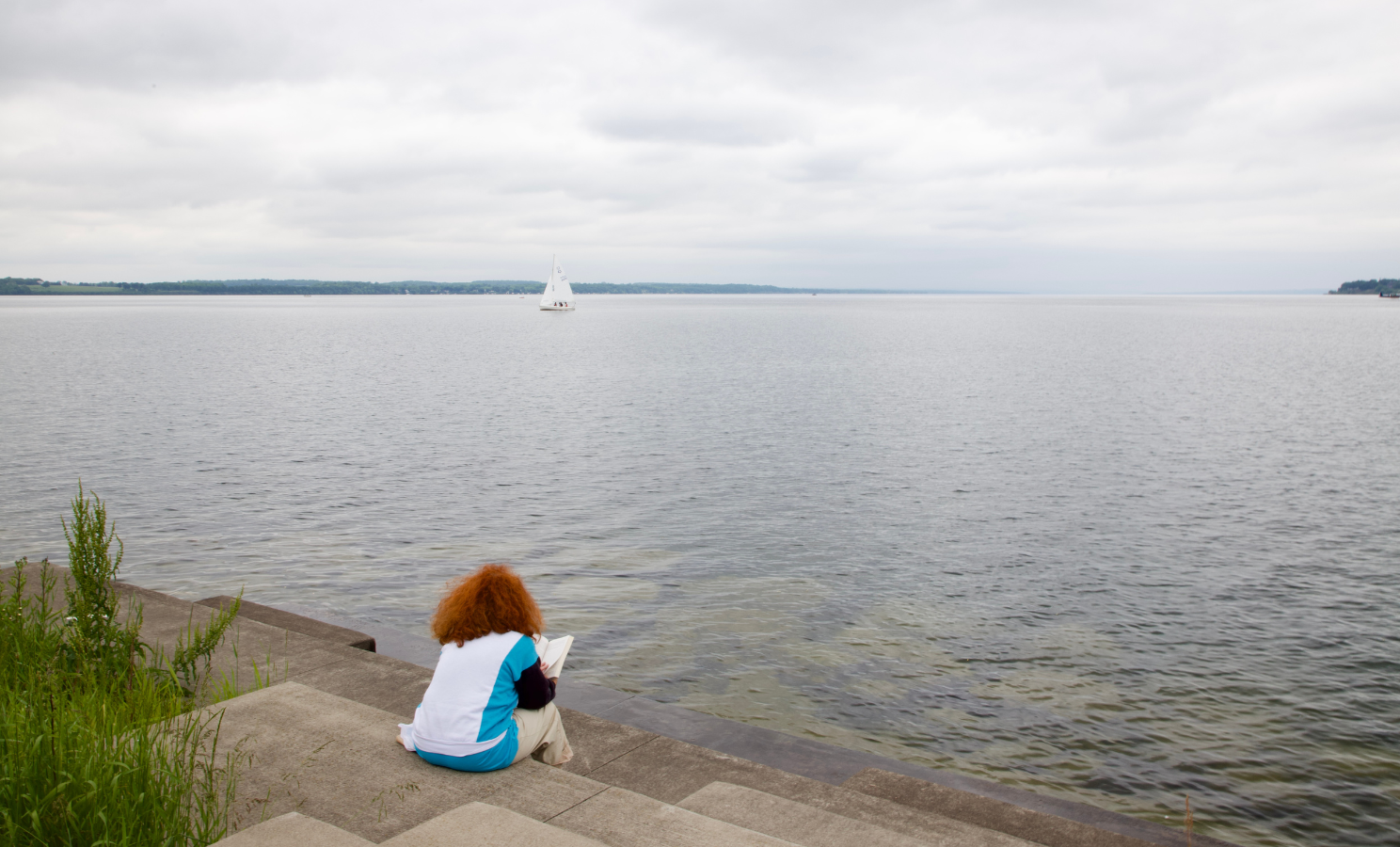CONTACT US
News
Home » Why is the Lake Level so Low?

GENEVA, N.Y. – This year, Seneca Lake is experiencing unusually low water levels, similar to what we saw in 2020. As of Thursday, September 4, the lake measures 445.34 ft, essentially at the winter target and 6 inches below the summer target low. While these conditions can raise concerns for boaters, shoreline property owners, and the local ecosystem, it’s important to understand the natural and managed factors that influence lake levels.
2020 vs. 2025 Lake Levels
As you can see in the chart below, August 2025 closely mirrors August 2020, with 2020 represented by the red line and 2025 by the blue line.
Current 2025 Lake Level
As of Thursday, September 4, the lake measures 445.34 ft, essentially at the winter target and 6 inches below the summer target low.
Historical Context: Original 2020 Article
The following article was originally published in 2020 to explain factors affecting Seneca Lake’s water levels. It is being repurposed here to provide context for current 2025 conditions.
Why is the Lake Level so Low?
There is a long history of concerns regarding Seneca Lake’s water levels and whether they are out of control. High and low water levels can cause severe issues, both in the water and on shore. High water can damage docks, erode shorelines, and threaten beach dwellings. Low water can create navigational issues, strand boats in their lifts, and threaten water supplies. The summer of 2020 saw drought in the Seneca Lake watershed that resulted in late summer–early fall lake levels that had not been seen in several years. The NYS Canal Corporation maintains a lake level measurement at the north end of the lake and keeps an up-to-date chart showing elevation of the lake in feet versus time. The 2020 chart shown below indicates that water levels were below the lower control limit since mid-August.
Lake Management and Controls
Seneca Lake is part of the network of lakes, canals, and waterways that comprise the Oswego River Basin, a large watershed that includes all of the Finger Lakes and directs flow into Lake Ontario. Water flows into Seneca Lake from its many tributaries that drain its watershed, the largest being the Keuka Outlet, which is the only outflow of Keuka Lake. Other than evaporation, which can be significant, and drinking water purveyors, all discharge from Seneca Lake is at the north end via the Seneca-Cayuga Canal. The gates on the Keuka Outlet in Penn Yan are the only incoming control, and they are used primarily for control of Keuka Lake level.
Gravity Renewables (now managed by Relevate Power) oversees the hydroelectric plants in Waterloo and Seneca Falls and is licensed by the Federal Energy Regulatory Authority (FERC). The FERC license requires the company to control the Seneca Lake level according to a “rule curve” that provides for summer and winter levels, and the transition periods between. The lines on the chart indicate these rule curve limits. The power plants manage the flow in the canal via turbine gates. In addition, the New York State Canal Corporation operates a small bypass gate and locks on the canal. Seneca Lake discharges to Cayuga Lake, where discharge is managed by the NYS Canal Corporation (NYSCC). NYSCC’s responsibilities focus on safe navigation through New York State canals.
The Role of Rainfall
Rainfall is the critical component that feeds this system of water flow. An inch of rain on a dry and thirsty landscape can result in little to no runoff into the lake, as seen in recent months. Conversely, an inch of rain on a saturated or frozen landscape can significantly increase lake levels, given the large area of the watershed compared to the lake. In recent years, severe rainstorms have caused damaging runoff events and significant jumps in lake level.
In 2020, we were spared these heavy storms, and the rainfall that did occur in the summer and early fall was generally spaced out and largely absorbed by the landscape. The 2019 chart shows a couple of minor spikes during the summer, though Seneca’s lake levels were generally maintained and on target. Charts from 2017 and 2018 show more significant high water spikes due to rain events. This historical data is available on the Pure Waters website. You must go back to 2016 to see a period of late summer–fall water levels below the rule curve, though in that year levels increased in October to return to control limits sooner than what we are experiencing this year.
Current Management Efforts
Pure Waters has had recent dialogue with the folks at Gravity Renewables (now Relevate Power) and are assured that they are doing all they can to manage their operations to minimize current issues. Looking back at the 2020 chart, you’ll note that water levels remained quite constant for the last two months and were well centered within the winter control limits. Assuming reasonable inflows in the next month, we should see the level move within the winter curve limits.
More background information can be found on the Pure Waters website, and we maintain a link to the most recent lake level chart.
To learn more about lake level: https://senecalake.org/about/seneca-lake/lake-level/
To learn more about donating: https://senecalake.org/giving/
Seneca Lake Pure Waters Association is a 501(c)3 organization committed to preserving, protecting, and promoting the abundant resources of the largest Finger Lake. Seneca Lake is a source of drinking water, recreation, and economic opportunity for the greater community and its visitors. Our programs and partnerships make it possible to monitor water quality, educate the public, and evaluate threats to ensure the a healthy future for Seneca Lake and those who depend on it.